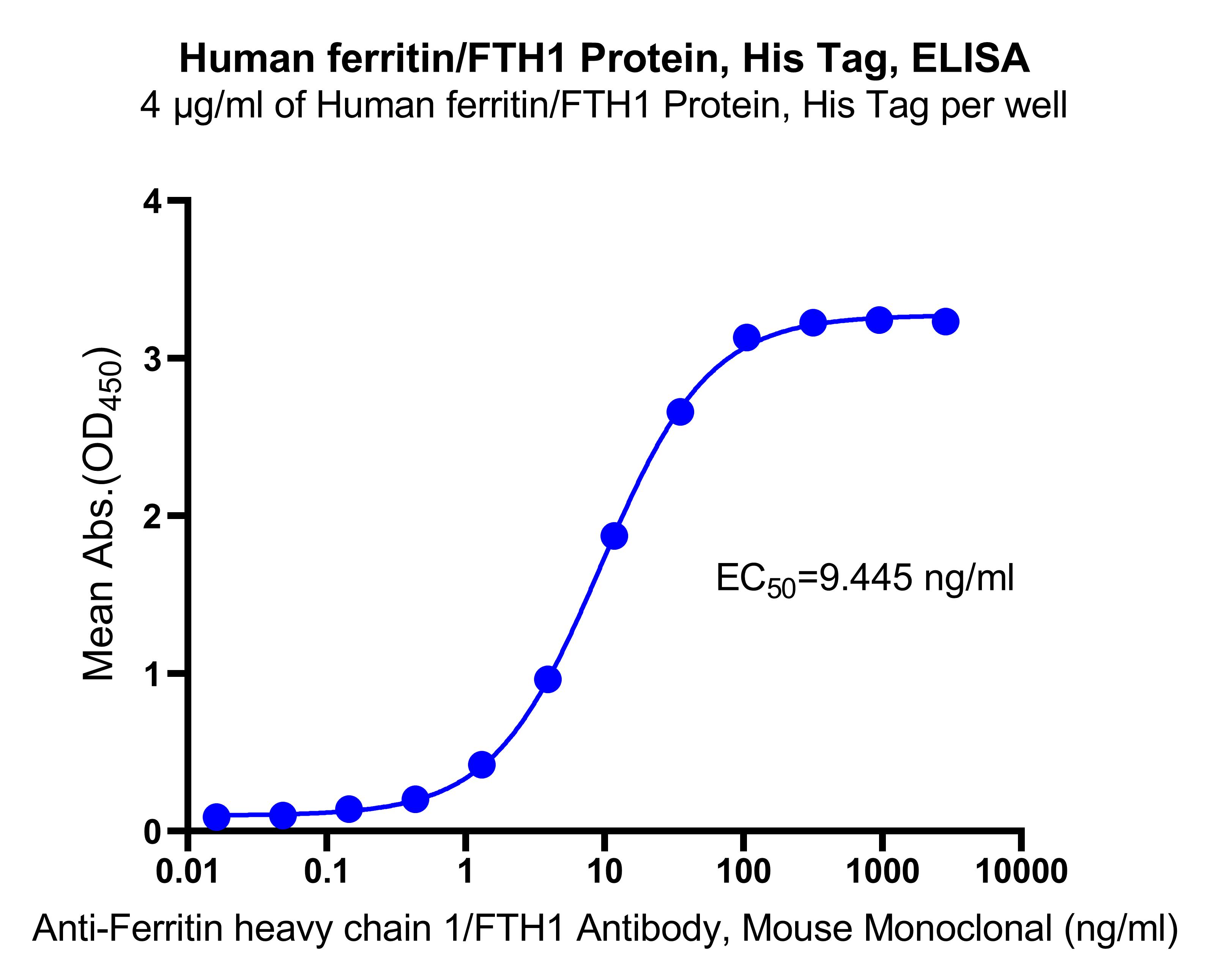Protein sequence (P02794, Met1-Ser183, with C-His tag) MTTASTSQVRQNYHQDSEAAINRQINLELYASYVYLSMSYYFDRDDVALKNFAKYFLHQSHEEREHAEKLMKLQNQRGGRIFLQDIKKPDCDDWESGLNAMECALHLEKNVNQSLLELHKLATDKNDPHLCDFIETHYLNEQVKAIKELGDHVTNLRKMGAPESGLAEYLFDKHTLGDSDNES
Predicted MW: 22.9 kDa Observed MW: 24 kDa
12 months from date of receipt, -20 to -70 °C as supplied.
6 months, -20 to -70 °C under sterile conditions after reconstitution.
1 week, 2 to 8 °C under sterile conditions after reconstitution.
Please avoid repeated freeze-thaw cycles.
Ferritin heavy chain is a ferroxidase enzyme that in humans is encoded by the FTH1 gene. FTH1 gene is located on chromosome 11, and its mutation causes Hemochromatosis type 5. This gene encodes the heavy subunit of ferritin, the major intracellular iron storage protein in prokaryotes and eukaryotes. It is composed of 24 subunits of the heavy and light ferritin chains. Variation in ferritin subunit composition may affect the rates of iron uptake and release in different tissues. A major function of ferritin is the storage of iron in a soluble and nontoxic state. Defects in ferritin proteins are associated with several neurodegenerative diseases. Plasma ferritin is also an indirect marker of the total amount of iron stored in the body; hence, serum ferritin is used as a diagnostic test for iron-deficiency anemia. Aggregated ferritin transforms into a toxic form of iron called hemosiderin.

Immobilized Human ferritin/FTH1 Protein, His Tag at 4 μg/mL (50 μL/well) can bind Anti-Ferritin heavy chain 1/FTH1 Antibody, Mouse Monoclonal with EC50 of 8.877-10.05 ng/ml.
2 μg(R: reducing conditions)